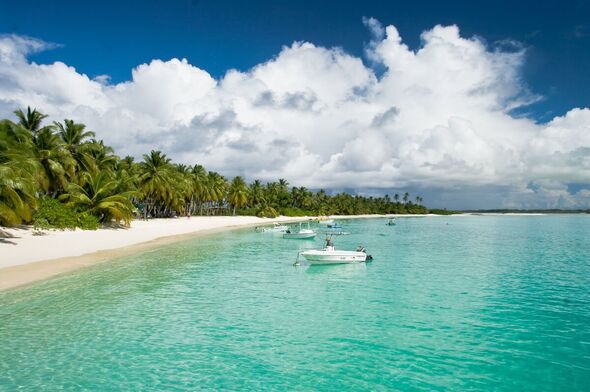Many dream of staying on a tiny tropical island far away from any busy city. Soft sandy beaches and turquoise waters are within walking distance, and palm trees line the shore.
The Cocos (Keeling) Islands in the Indian Ocean ticks all those boxes – it will just take you a while to get there.
The closest large landmass to the islands is actually the island of Java, Indonesia, which is about 680 miles away. The Cocos (Keeling) Islands are often considered to be the southernmost point of Asia, as they are closer to the coast of Indonesia than Australia.
But, they are an Australian external territory comprising a small archipelago about midway between Australia and Sri Lanka in South Asia.
The territory consists of two atolls made up of 27 coral islands, of which only two – West Island and Home Island – are inhabited.
The population of around 600 consists mainly of Coco Malays, who mostly practice Sunni Islam and speak a dialect of Malay (also spoken on Christmas Island) as their first language.
Together with Christmas Island, which is about 600 miles to the east, they form the Australian Indian Ocean Territories administrative grouping, administered by the Australian federal government.
The islands consist of two flat, low-lying coral atolls, each with an area of 5.5 square miles, 16 miles of coastline, and a highest elevation of just five metres. They are thickly covered with coconut palms and other vegetation.
The climate is pleasant, hovering around the high 20s to low 30s for most of the year. Tropical cyclones may occur in the early months of the year.
North Keeling Island is an atoll consisting of just one C-shaped island, a nearly closed atoll ring with a small 50-metre opening into a lagoon of about 120 acres. This island and the surrounding sea form the Pulu Keeling National Park, established in December 1995. It is home to the only surviving population of the endemic and endangered Cocos Buff-banded Rail, a type of small brown bird.
South Keeling Islands is an atoll of 24 individual islets forming an incomplete atoll ring, with a total land area of 5.1 square miles. The two populated islands are found here. The Cocos Malays maintain weekend shacks on most larger islands.
The islands were discovered in 1609 by the British sea captain William Keeling, but no settlement occurred until the early 19th century. One of the first settlers was John Clunies-Ross, a Scottish merchant; much of the island’s current population is descended from the Malay workers he brought in to work his copra (coconut) plantation.
The British annexed the islands in 1857, and for the next century, they were administered from either Ceylon or Singapore. The territory was transferred to Australia in 1955.
There are no rivers or lakes on either atoll. Fresh water resources are limited to water lenses on the larger islands and underground accumulations of rainwater lying above the seawater. These lenses are accessed through shallow bores or wells.
Most of the population, 73.5%, were born in Australia—either on the mainland, on the Cocos Islands, or in another Australian territory. The remaining 26.5% come from other countries, including Malaysia (4.0%), the UK (1.3%), New Zealand (1.2%), Singapore (0.5%), and Argentina (0.5%).
You are able to stay on Cocos (Keeling) Islands, with a variety of accommodation options including beach houses, bungalows and apartments. West Island has the airport, supermarket, visitor centre and hire cars.
Virgin Australia operates an air service between Perth and the Cocos (Keeling) Islands via Christmas Island. Flights depart Perth International Airport and transit Christmas Island on Tuesday and Saturday each week, according to the Australian Government website.
